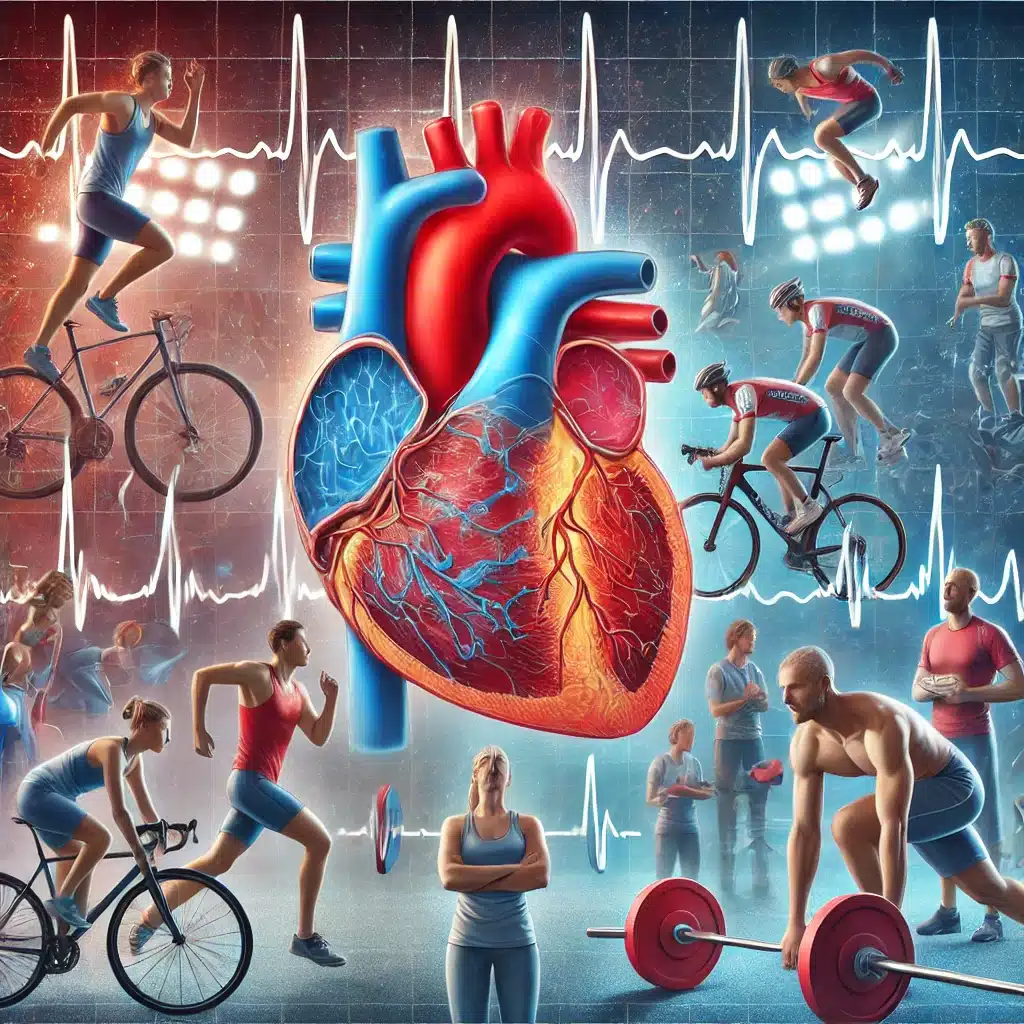Understanding the Impact of Sports on Cardiac Health: Insights from Recent Research
At HolistiCare Physical Therapy, we emphasize the importance of understanding how various activities affect overall health. A recent study, “Wide Spectrum of Bradyarrhythmias and Supraventricular Tachyarrhythmias in Sportsmen: Run Forrest, Run?!” by Zofia Kampka et al. (2024), sheds light on the intricate relationship between sports participation and cardiac arrhythmias, providing valuable insights into how we can better support our patients.
The Complex Relationship Between Sports and Cardiac Arrhythmias
Physical activity is crucial for preventing cardiovascular diseases. However, intense physical activity can also lead to structural, functional, and electrical changes in the heart, potentially triggering arrhythmias such as atrial fibrillation (AF) (Kampka et al., 2024). The study highlights a J-shaped association between AF and exercise, suggesting that while moderate exercise is beneficial, excessive endurance training increases AF risk, particularly in male athletes.
Understanding Bradyarrhythmias and Tachyarrhythmias
Bradyarrhythmias, such as sinus bradycardia and atrioventricular (AV) blocks, are common in athletes due to high vagal tone and cardiac adaptations from intense training. These conditions require careful management, especially when symptoms like fatigue and dizziness occur. On the other hand, tachyarrhythmias, including AF, are also prevalent among athletes. Endurance sports can lead to atrial enlargement and fibrosis, increasing the risk of AF. Different sports modalities impact the heart in various ways. For instance, swimming might pose a higher AF risk due to specific physiological responses like cold water exposure and horizontal body position (Kampka et al., 2024).
Managing Arrhythmias in Athletes
Managing arrhythmias in athletes involves balancing athletic performance and medical needs. Personalized treatment strategies are essential. For AF, rhythm control is preferred over rate control, and pulmonary vein isolation (PVI) may be considered as a first-line treatment in some cases. The use of direct oral anticoagulants (DOACs) must be managed carefully, particularly in contact sports. For bradyarrhythmias, pacemaker implantation might be necessary for symptomatic cases. Athletes with pacemakers can continue sports with certain precautions to prevent device damage (Kampka et al., 2024).
The Paradox of AF and Physical Activity
Physical inactivity is a modifiable risk factor for AF, and meeting recommended levels of physical activity (150 minutes of moderate-intensity exercise per week) is associated with a reduced risk of AF. Exercise helps manage risk factors such as obesity, hypertension, and diabetes, reducing inflammation and maintaining autonomic balance. However, determining the optimal amount of physical activity is challenging. While current guidelines suggest 450–900 metabolic equivalent of task (MET)-minutes per week, some studies indicate benefits at 1000–1500 MET minutes per week. This highlights the need for more objective measures in studies to accurately report physical activity levels (Kampka et al., 2024).
Screening for AF in Athletes
Identifying at-risk athletes for AF is challenging. Self-reported exercise training history often overlooks training intensity, and relying solely on left atrial enlargement as a predisposing factor is limited. Assessing atrial fibrosis with cardiac magnetic resonance appears promising but requires further investigation. Many athletes experience exercise intolerance and acute fatigue during AF onset, while some remain asymptomatic. Prolonged ECG monitoring or intermittent recording devices are necessary for detecting paroxysmal AF accurately (Kampka et al., 2024).
The study by Kampka et al. (2024) provides a comprehensive look at how intense sports activities affect cardiac health, particularly focusing on arrhythmias. At HolistiCare Physical Therapy, we integrate such research insights into our approach to ensure holistic and effective treatment for our clients. By understanding the nuances of how sports impact heart health, we can better tailor our therapeutic strategies to support both athletic performance and overall well-being.
Reference:
Kampka, Z., Drabczyk, M., Piłka, N., Orszulak, M., Rycyk, M., Mizia-Stec, K., & Wybraniec, M. T. (2024). Wide Spectrum of Bradyarrhythmias and Supraventricular Tachyarrhythmias in Sportsmen: Run Forrest, Run?!. Reviews in Cardiovascular Medicine, 25(6), 221. https://doi.org/10.31083/j.rcm2506221


